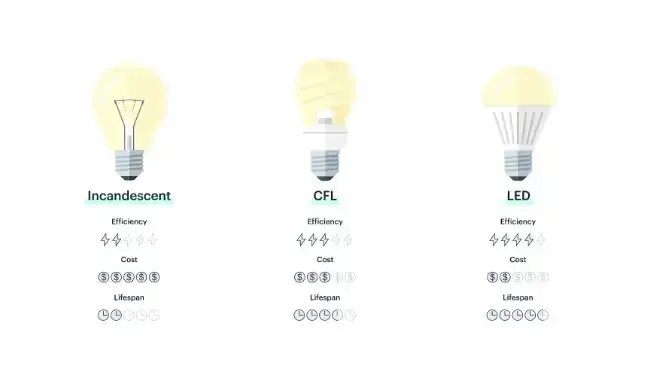
The Evolution of Light Bulbs: From Incandescent to LED
The Evolution of Light Bulbs: From Incandescent to LED
Light bulbs have come a long way since their invention in the late 19th century. From the warm glow of incandescent bulbs to the energy-efficient brilliance of LEDs, the evolution of lighting technology has transformed our homes, workplaces, and cities. This blog post will explore the journey of light bulbs, highlighting the key innovations that have shaped our illuminated world.
The Birth of the Incandescent Bulb
Thomas Edison's Breakthrough
In 1879, Thomas Edison created the first commercially successful incandescent light bulb. While he wasn't the first to experiment with electric light, Edison's design was practical and long-lasting enough for widespread use.
How Incandescent Bulbs Work
Incandescent bulbs produce light by heating a thin wire filament until it glows. This simple mechanism remained the primary lighting technology for over a century.
I remember the warm, comforting glow of incandescent bulbs in my childhood home. There was something magical about the way they instantly lit up a room.
The Rise of Fluorescent Lighting
Early Fluorescent Technology
Fluorescent lights were first introduced in the 1930s. They offered longer lifespans and better energy efficiency compared to incandescent bulbs.
Advantages and Disadvantages
Pros: Energy-efficient, long-lasting
Cons: Harsh light quality, contains mercury
Fluorescent lights became popular in offices and commercial spaces, but their bluish tint and occasional flickering made them less appealing for home use.
The Compact Fluorescent Revolution
CFL Design and Efficiency
Compact Fluorescent Lamps (CFLs) were developed in the 1970s, offering the benefits of fluorescent lighting in a more compact, consumer-friendly form.
Environmental Concerns
While CFLs were more energy-efficient than incandescent bulbs, concerns about their mercury content and disposal issues led to mixed public reception.
The LED Era
How LED Technology Works
Light Emitting Diodes (LEDs) produce light through electroluminescence, a completely different mechanism from earlier bulb types.
Advantages of LED Lighting
Extremely energy-efficient
Long lifespan (up to 25,000 hours or more)
Versatile color options
Durable and eco-friendly
The Rapid Adoption of LEDs
LEDs have quickly become the dominant lighting technology due to their efficiency and versatility. From home lighting to street lamps, LEDs are transforming the way we illuminate our world.
When I first switched to LED bulbs in my home, I was amazed at how much my electricity bill decreased. It felt like a small but significant step towards a more sustainable lifestyle.
The Future of Lighting
Smart Lighting Systems
The integration of LEDs with smart home technology is opening up new possibilities for customizable and automated lighting solutions.
Ongoing Research and Development
Scientists and engineers continue to work on improving LED efficiency and exploring new lighting technologies, such as organic LEDs (OLEDs) and quantum dot LEDs.
The evolution of light bulbs from incandescent to LED represents more than just technological progress. It reflects our growing awareness of energy efficiency and environmental impact. As we look to the future, it's clear that lighting will continue to play a crucial role in shaping our living spaces and our planet's sustainability.